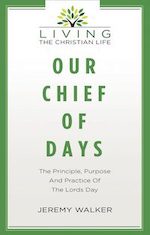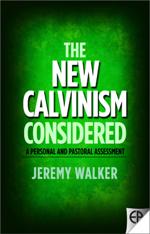Here’s a confessional question . . .
In chapter 8 of the 1677/89 Baptist Confession of Faith, concerning Christ the Mediator, the second paragraph begins as follows (with original puncutation):
The Son of God, the second Person in the Holy Trinity, being very and eternal God, the brightness of the Fathers glory, of one substance and equal with him: who made the World, who upholdeth and governeth all things he hath made: . . .
Many of the modern editions basically read it as if it said that the Son of God is of one substance and equal with God who made the world and who upholds and governs all things he has made (i.e. they ditch the first colon).
Others of the modern editions read it as if it said that the Son of God is of one substance and equal with the Father. A second statement follows to the effect that the Son made the world and upholds and governs all that he made. In other words, they take the colon (as it often is employed in the confession) as starting a new clause concerning the subject of the paragraph, the Son of God.
Normally, one might turn to the commentaries on the Westminster Confession to see if any further light might be shed, but the phrase in question is introduced by the Baptists (the Savoy gents do not use it either). Without wishing to prejudice anyone in a particular direction by further discussing the punctuation of the Confession or considering which interpretation (if either) is more theologically full and/or accurate, or indeed by stating my own inclination, I wonder if any friends of the blog might opine on this one, especially Baptists who have taught this part of the confession.
Answers on a postcard, please, or failing that, in the comments section below. Thanks in advance.


















I would retain the colon. Beyond that, despite the protestations of a friend of mine, I am no theologian that I should further opine. I would be very interested to know the views of one Dr J Renihan on this.
Jonathan Hunt
Saturday 11 May 2013 at 22:27
It seems to me that the “Him who made the world and upholds and governs all things He has made” is the same “Him” who “when the fullness of time was come, take upon him man’s nature.” This can only be the Lord Jesus. This is consistent with the Nicene and Chalcedon Creeds.
Bob Brown
Saturday 11 May 2013 at 22:29
I agree with Bob. The version by Founders Press is going to be corrected at this point for its next printing. Also, the 1689 followed the 1644/46 and the 1596 True Confession per the Nicene Creed. So said Dr. Renihan.
richbarcellos
Sunday 12 May 2013 at 04:38
Got to be option “b”, doesn’t it? One notes also that this is the first of five (!) cola in this paragraph, each one succeeding the previous in describing the work and person of the Son. Besides which, it’s Colossians 1:16-17, innit, although in my edition (Lumpkin) no proof-text is provided at this point.
David
Sunday 12 May 2013 at 14:10
[…] If you can help, go answer at his blog. […]
Help Needed With A Confessional Question, Christ the Mediator – Jeremy Walker | The Confessing Baptist
Monday 13 May 2013 at 10:45
BTW what is a postcard? I think I may have read about such a thing in a history book somewhere. ;-)
Bob Brown
Tuesday 14 May 2013 at 15:27
Think of it as a pre-digital tweet.
Jeremy Walker
Wednesday 15 May 2013 at 07:26
[…] you, one and all, for your responses here and on Facebook to the question about Chapter 8, paragraph 2, of the Confession of Faith, and the reference to the Son as […]
Confessional questions | The Wanderer
Wednesday 15 May 2013 at 07:42
[…] Walker got his last confessional question answered (see results here). But now ask […]
Confessional Question Answered & Another One Asked – Jeremy Walker | The Confessing Baptist
Wednesday 15 May 2013 at 12:55
[…] and caveats about how we treat the Scripture references in the 1677/1689 Confession (here and here, plus the delightful fact that – in the original – the footnotes are letters […]
Another confessional question | The Wanderer
Saturday 1 June 2013 at 20:56